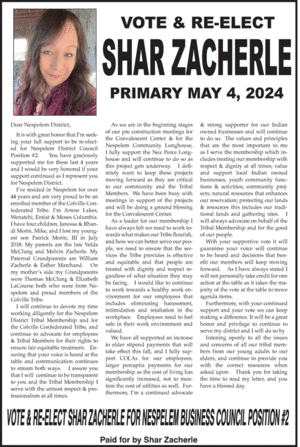Great American road trip says “See America First”
Last updated 8/23/2012 at 9:02pm
When America’s frontier was officially declared closed in 1890, the country scrambled for a new identity. For hundreds of years, we had been a nation with seemingly limitless borders. The stretch from the Atlantic to the Pacific felt endless and the people of our nation proudly embraced the idea of their pioneering character. But when the frontier closed, the nation stumbled to find a new backbone. Expansionism was over and the world wars that brought our modern nation into global dominance was still in the future.
Around this time, the elite and middle classes of the east coast were spending $500 million a year visiting Europe. In an effort to keep some of that money at home, the newly formed national parks and the great railways that depended on domestic travel joined hands and gave America a new identity. By insisting that true nationalists “See America First,” they impressed upon the nation a new identity that was tied to the terrain within our own country. Tourism in America was officially launched and a new national spirit inspired citizens.
When rail travel was replaced with the personal automobile, Americans clambered in and took to the highways. Rising gas prices notwithstanding, then, as now, the American road trip was within reach of all classes. This summer, my family and I, along with millions of others, continued this tradition. Like other families across America, we stuck to a reasonable distance and explored our neighboring states.
Leaving the highway system and the warp speed it requires, we took to the back roads and slowed down, marveling that the life we saw passing our windows existed in the same country that we did. The diversity in life and landscape was dramatic.
Traveling through three different national parks gave me some interesting perspective. I found that I was incredible proud, not just of the breathtaking landscape, but of the foresight and ingenuity required to set aside such spectacular places. It was hard to remember that when these lands were set aside, land in America was plenty and the need to preserve and protect all but absent.
As we traveled through the national parks I marveled at the diversity I saw in such remote places. License plates from almost every state, many languages, and a smorgasbord of nationalities were represented at every visitor’s center and scenic overlook. I also found it interesting to see that despite the stunning vistas, human weaknesses were just as rampant. Tailgaters, pushy camera-toting tourists, and outright rudeness were abundant. Yet in the midst of such thoughtlessness towards other humans, everyone was incredible considerate towards the landscape. Somehow being in such wildness seemed to create an air of responsibility around almost every tourist I saw. It was as if we were all united behind one pulse of thought: protect this wild place.
It is no secret that the wild places and wild things of the world are shrinking. In many places on our trip, set in the middle of some of the most rugged country in our nation, cell reception was perfect and a mobile GPS unit could find me no matter what road I traveled.
Upon creation, the National Park Service was charged with providing pleasure for the American people while also keeping them “unimpaired for the enjoyment of future generations.” Such a mission statement is challenging at best, but after spending my summer vacation “Seeing America First,” I have to say it is well worth the effort. The identity of future generations of Americans may depend on it.






Reader Comments(0)